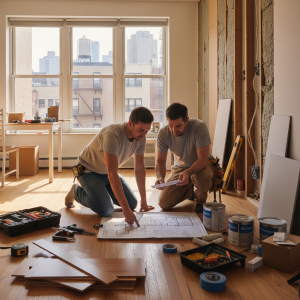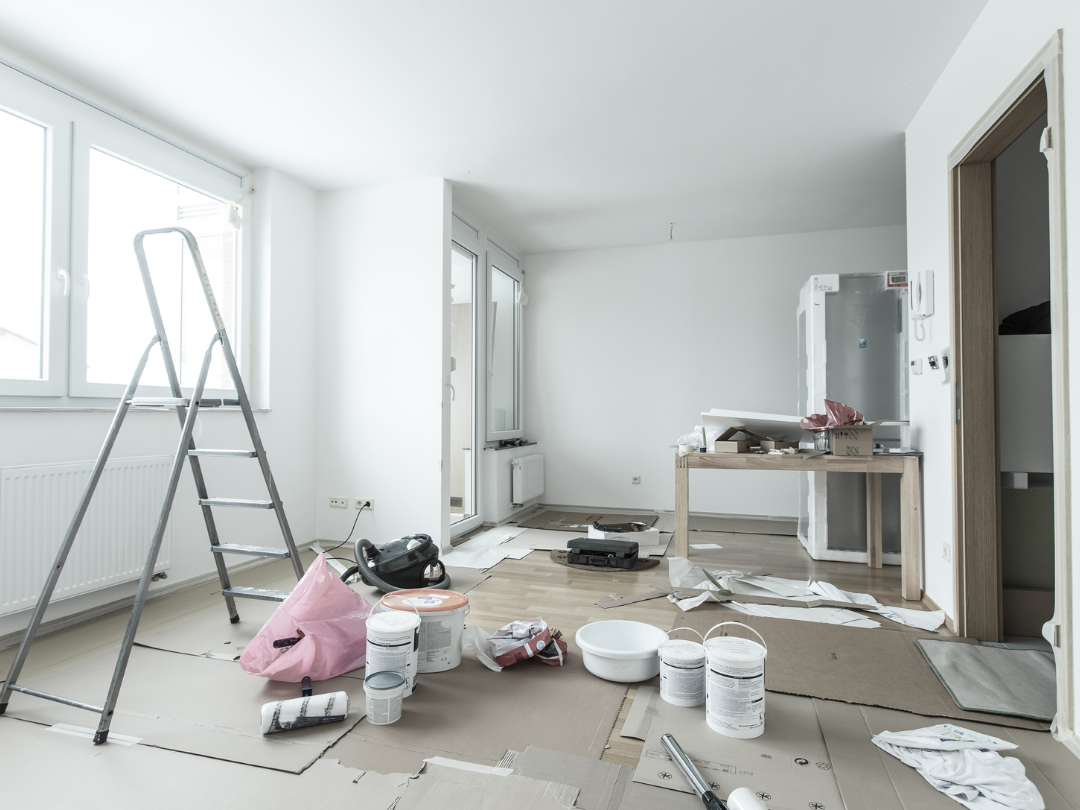Get the week's most popular posts delivered to your inbox.
Our weekly update is free yet priceless and you're less than a minute away from getting the current edition.
In the unlikely event we disappoint, you can unsubscribe with a single click!
Last Updated on November 18, 2025 by teamobn
DIY projects can be exciting, rewarding, and a great way to improve your home or create something new. But they also come with risks that shouldn’t be ignored. From sharp tools and power equipment to dust and chemicals, safety hazards are everywhere in a DIY environment.
Like many, I haven’t been immune to the ‘she’ll be right’ attitude, especially when it’s a ‘10 minute job’. One such short-cut resulted in a ceramic tile shard spearing through the top of my foot, severing an artery and putting me out of action for a week. Crocs don’t offer a lot of protection!
Another resulted in a steel splinter lodging in my eyeball. I was only making a single cut in a length of aluminum. What are the chances? Um, no. I wasn’t wearing eye protection!
It would have taken minutes to put on work boots. Less to get my safety glasses. Bottom line? Using the right personal protective equipment (PPE) is crucial. Simple items like safety glasses, masks, enclosed footwear, and gloves not only protect you from accidents but also help you stay productive by keeping your focus on the task instead of on potential injuries.
Neglecting PPE may seem tempting for smaller projects, but even minor tasks can lead to cuts, burns, eye damage, or respiratory problems. Protecting yourself is not about overcomplicating the process. It’s about choosing the right gear for the type of work you are doing. Below, you’ll find the most essential PPE items every DIY enthusiast should have at hand.
Contents
Eye Protection for Dust, Debris, and Sparks

One of the most common accidents during DIY work involves the eyes. Even something as simple as drilling a hole or cutting wood can send tiny fragments flying toward your face. Safety glasses or goggles should be considered non-negotiable for any project.
For woodworking, safety glasses with side shields provide the best coverage. If you’re using metal grinders or welding, a full face shield or welding helmet may be necessary. Clear, anti-fog lenses are ideal for indoor use, while tinted or shaded versions are better suited for outdoor projects where sunlight can create glare.
The best part is that eye protection is inexpensive compared to the cost of a hospital visit. Wearing glasses might feel like an extra step, but once it becomes a habit, you’ll feel incomplete without them during any project.
Hand Protection to Prevent Cuts and Burns

Your hands are the most valuable tools you own, and they’re often the first to get injured during DIY tasks. Cuts from sharp edges, burns from hot tools, or blisters from repetitive movements are all common issues. Investing in quality work gloves can save you from painful and disabling injuries.
Different projects require different glove types. For example, working gloves made of durable leather or synthetic materials are excellent for heavy-duty tasks like construction, gardening, or handling rough materials. For painting or chemical use, nitrile or latex gloves protect your skin from harmful substances. Heat-resistant gloves are a must if you’re dealing with soldering, welding, or hot appliances.
Gloves also improve grip, reducing the chances of dropping tools or losing control of equipment. This added security helps you work more efficiently and with greater confidence.
Respiratory Protection for Dust and Chemicals

Breathing hazards are often underestimated in DIY projects. Sawdust, paint fumes, adhesives, and cleaning chemicals can all cause irritation or long-term respiratory issues. Wearing the right mask or respirator prevents these invisible dangers from harming your lungs.
For light tasks like sanding wood, a simple disposable dust mask can provide sufficient protection. However, when working with strong chemicals or in poorly ventilated spaces, a respirator with proper filters is necessary. Respirators come in different grades depending on the type of airborne particles or gases you need to block.
Proper ventilation should always be a priority, but pairing it with respiratory PPE ensures your airways stay protected no matter the environment. This is especially important for those with asthma or allergies, where exposure can cause severe reactions.
Hearing Protection Around Power Tools

Power tools make DIY projects faster and more efficient, but they also produce noise levels that can damage hearing over time. Circular saws, drills, sanders, and other equipment can easily exceed safe noise levels, leading to gradual hearing loss if not addressed.
Earplugs and earmuffs are the most common solutions. Foam earplugs are cost-effective and easy to use, while earmuffs provide a higher level of protection and can be more comfortable for extended use. Some modern earmuffs even feature electronic noise-canceling technology that reduces harmful sounds while still allowing you to hear conversations or ambient noise.
Protecting your ears not only prevents long-term damage but also keeps you more focused, as you won’t be distracted by overwhelming noise.
Head Protection for Overhead Hazards

In many DIY settings, especially outdoor projects or garage workshops, falling objects are a real hazard. Head protection might not always seem necessary, but if you’re climbing ladders, working with heavy materials, or performing any demolition, a hard hat can prevent serious injury.
Even lightweight helmets designed for home use can make a huge difference. They are built to absorb impact and protect you from bumps, falling tools, or even slips that lead to head collisions. When paired with other PPE, helmets round out a complete safety kit for larger projects.
Protective Clothing and Footwear

The clothes and shoes you wear during DIY projects are just as important as specialized gear. Loose clothing can get caught in machines, while poor footwear can lead to slips or lack of stability. Wearing snug but comfortable workwear is key.
Long sleeves and pants made from durable materials protect your skin from sparks, splinters, and chemicals. Aprons or overalls add an extra layer of defense and keep your everyday clothes clean. For footwear, steel-toe or reinforced work boots are recommended for projects involving heavy lifting, while slip-resistant shoes help when working on smooth or wet surfaces.
Good clothing choices not only prevent accidents but also make projects feel more professional and organized.
Final Thoughts on Staying Safe and Efficient
Every DIY project carries some level of risk, but with the right PPE, those risks become manageable. Eye, hand, respiratory, hearing, head, and body protection all play a vital role in creating a safer environment. Beyond safety, proper PPE also boosts productivity, as you can focus fully on your work without worrying about potential hazards.
Think of PPE as part of your toolkit, just as essential as hammers, drills, or saws. By preparing yourself with the right protective equipment, you not only protect your health but also set yourself up for more successful projects. Staying safe means staying productive, and that’s the foundation of every rewarding DIY experience.
Get the week's most popular posts delivered to your inbox.
Our weekly update is free yet priceless and you're less than a minute away from getting the current edition.
In the unlikely event we disappoint, you can unsubscribe with a single click!






